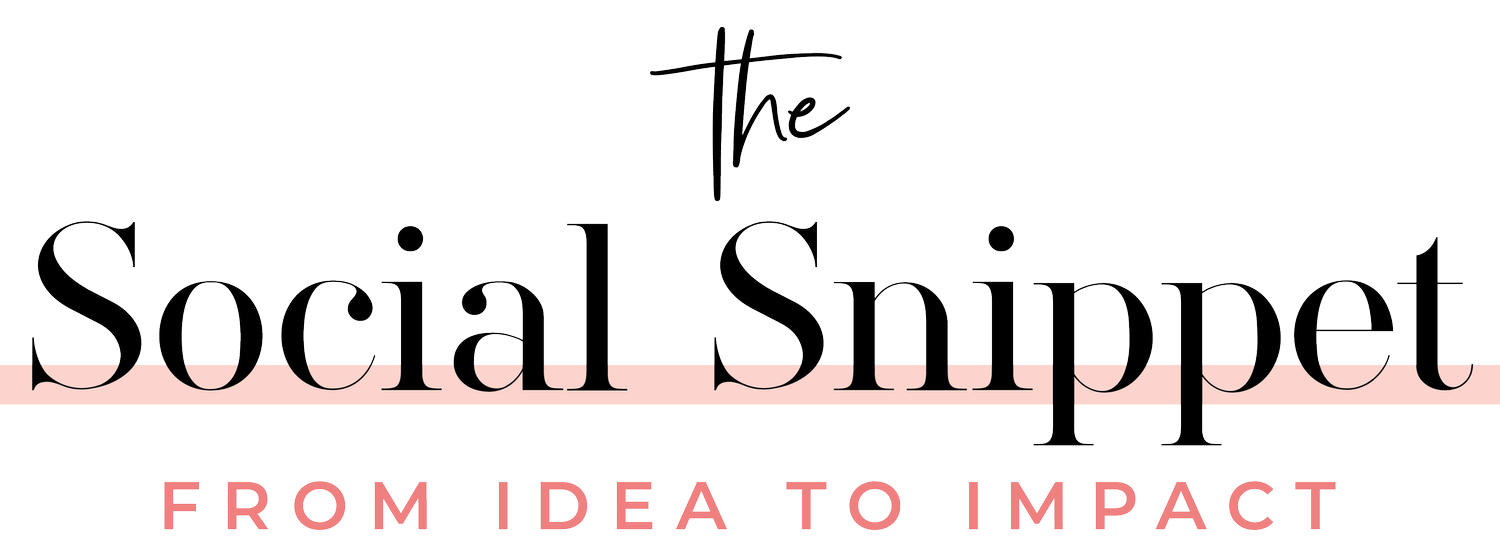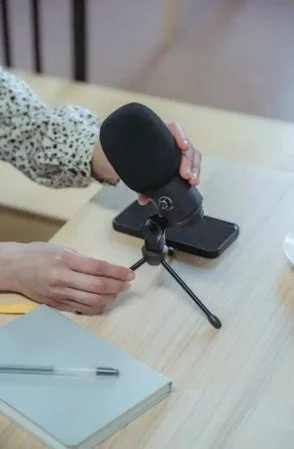The Equipment You Need For A Podcast
Whether you are a beginner or expert, sourcing the right equipment is crucial to your podcast’s overall success, but it can definitely be an overwhelming and tricky task - That’s where I come in!
In true Social Snippet fashion, I’ll be breaking down the equipment that every podcaster needs to record their episodes, all based on personal expertise and knowledge, along with helpful advice we’ve gathered along the way.
But, before we start talking podcast equipment, it is important to first consider the following:
What is your budget, and how much are you willing to invest in your podcast?
How is your podcast organized or set up? Will you be moving around or staying in one place? What is your format?
Be sure to think carefully about the kind of podcast you are looking to create, and then factor your budget into that, along with the level of gear you would like to purchase.
Furthermore, consider WHERE you will be recording your episodes, as the size and style of your podcast studio will affect the equipment you need, especially when it comes to microphones and recording devices.
Insider’s tip: Try to seek out a small, quiet and carpeted room (without hard surfaces) for a soundproof and effective recording space.
Okay, now that we’ve covered the groundwork, let’s officially dive into podcast equipment!
Theoretically, anyone can make a podcast with simply a smartphone and laptop, BUT this basic approach can only get you so far. If you want to enhance your audience’s listening experience, and truly stand out as a professional and credible podcastor, investing in better-quality gear is significant.
So, what’s the most important piece of equipment for podcast recording? I would definitely say the Microphone, for both you as host, and your guest.
However, there are two different podcast microphone options you can choose from, and your decision depends on both your podcasting needs and budget. See below -
Condenser Microphones have fantastic sound quality, especially for capturing vocals and other audio, but they can also be very sensitive.
Dynamic Microphones are less sensitive, and can handle external noise without distortion, but they are often much more costly than the condenser mic.
Both microphones evidently have their pros and cons for podcasting, and your choice should ultimately align with your recording space, budget and personal preferences, along with your technique and post-processing capabilities.
But that’s not all in regards to microphones, as you still have to decide how your microphone will actually connect to the recording device or computer. There are two ways to do this: USB or XLR.
The USB Microphone connects directly to your computer via USB, which makes it extremely user-friendly and an excellent option for beginners.
Whereas, the XLR Microphone offers greater digital audio quality and works better for more professional setups. They also require an audio interface or mixer for connection.
If you decide to take the XLR route, an audio mixer will allow you to connect your mic to your computer, providing more volume control and editing flexibility.
Let’s move on to Pop Filters.
A pop filter or foam mic cover is a screen placed in front of the microphone to lessen plosive sounds, such as “p” and “b” sounds, that can cause distortion. The cover’s job is to help improve audio quality, and is an inexpensive, but necessary podcasting gadget.
And, as for an underrated yet highly beneficial piece of podcasting equipment, cue in the Headphones.
For all your podcast hosting, wearing headphones allows you the ability to track and adjust the audio in real time, as well as stops your mic from picking up any feedback. Our favourite is - Amazon pick for SEO
Read on for the final bits of gear I believe are needed for a podcast:
Adjustable Microphone Boom Arm and Stand
When it comes to your podcast setup, an adjustable mic boom arm and stand can be tremendously useful for placing your microphone exactly where you need it for best sound quality and comfort.
There are plenty of boom arms available, so pick one that is suitable to your mic’s weight, size and studio space. Also, ensure that it matches well with your microphone’s shock mount or holder.
Likewise, select a mic stand that is compatible for your recording space and intended use.
Both arm and stand make for easy and convenient podcast recording. :)
Computer
Before you kick off your recording, you need a computer that is able to run your podcast recording software.
The software that you choose to use will work to capture and save your recording as an audio file.
Truthfully, as long as your chosen software is compatible and your computer has the capacity to manage your digital audio workstation (DAW), it doesn’t matter which operating system you use for podcasts.
Podcast Software
Yes, this blog post is both a free guide and starter kit to podcast equipment, but it is still worth mentioning that you will need to invest in podcast software.
Don’t fret, because you can do this in a cost-friendly and time-efficient manner, simply by working with the podcast editing software that best suits your needs.
Considerations may include how much editing you plan on doing, the environment in which you are recording, i.e. home recording studio or remote recording, along with what your experience is with that software, and yes, budget.

